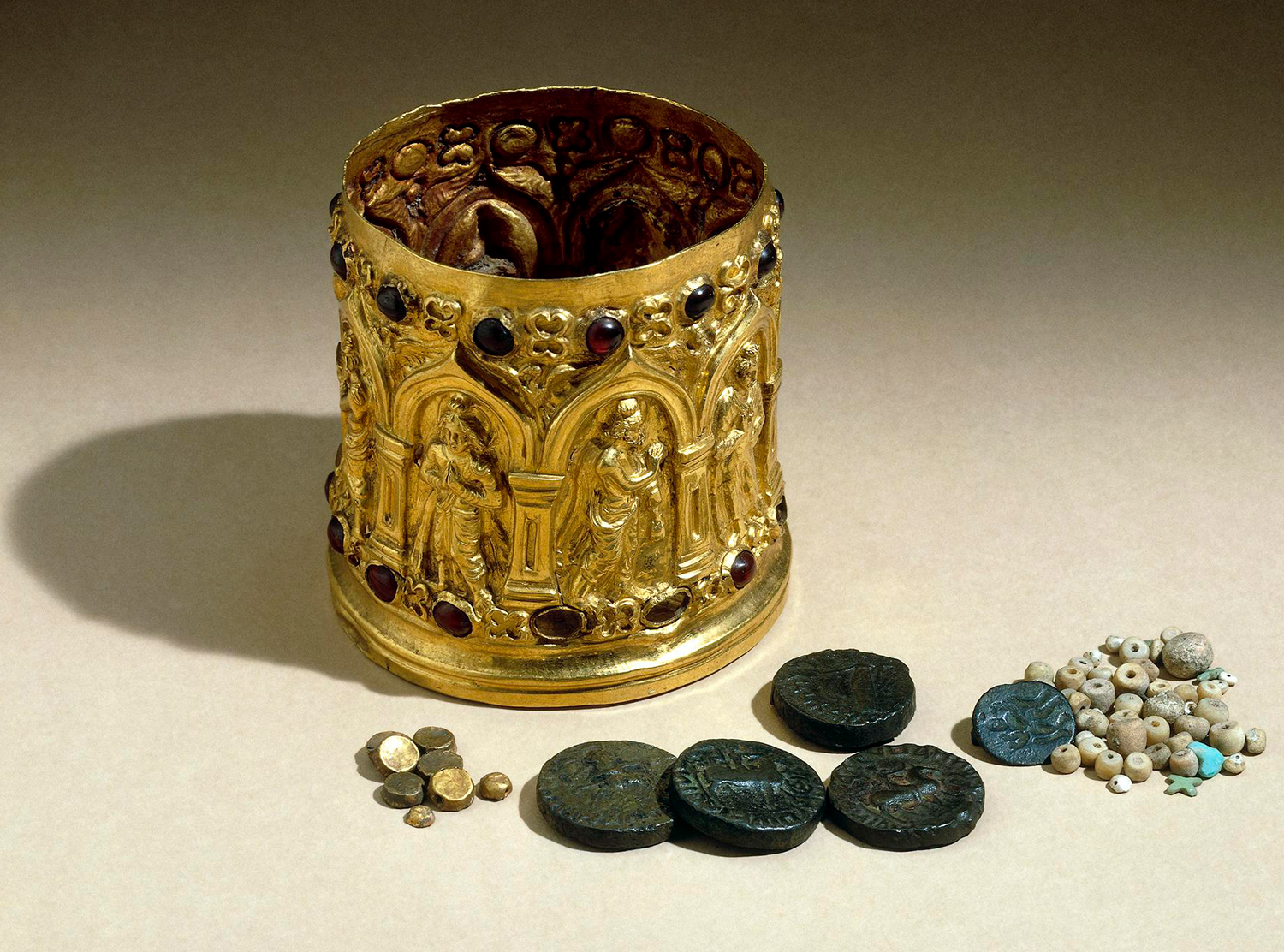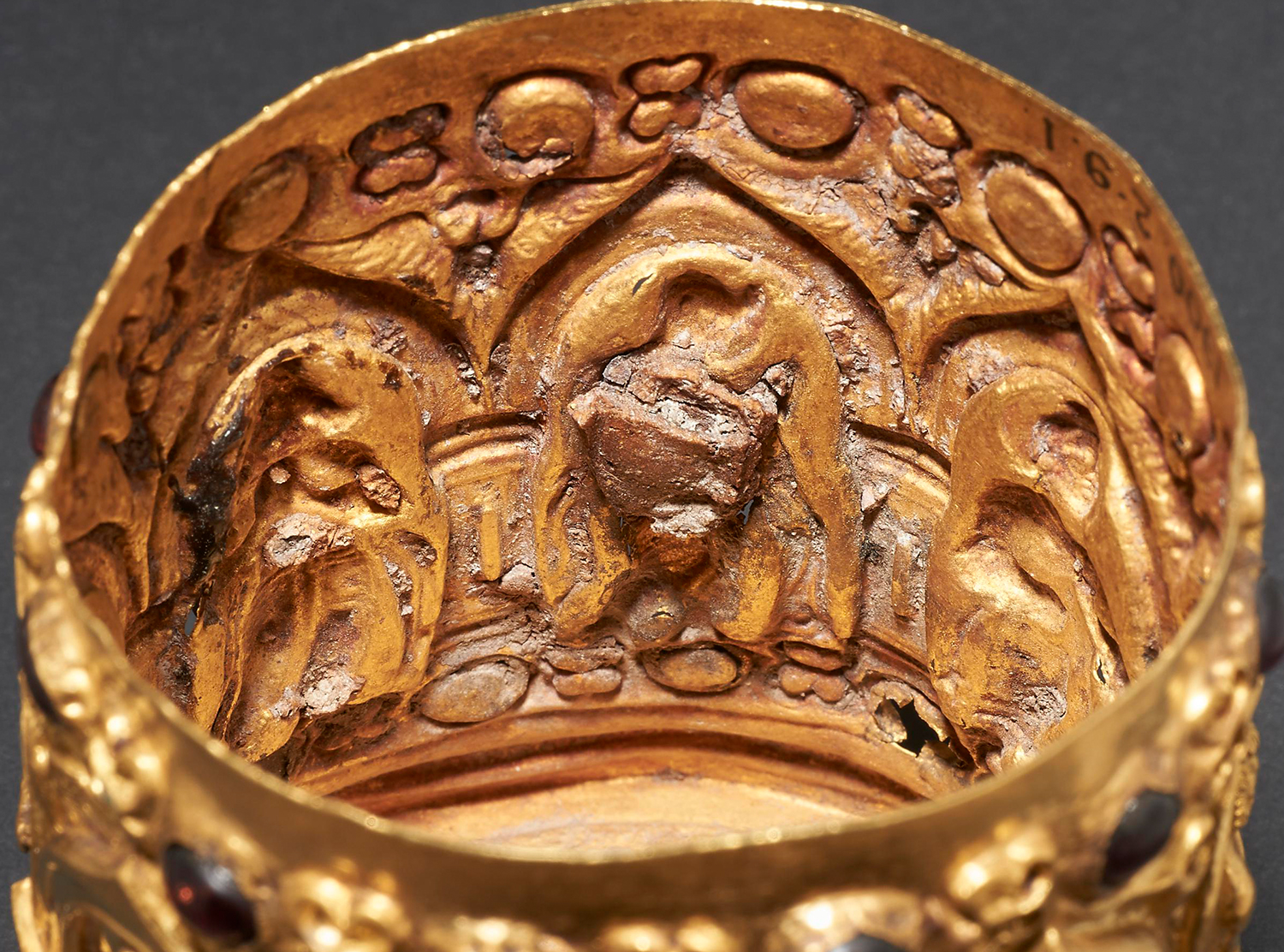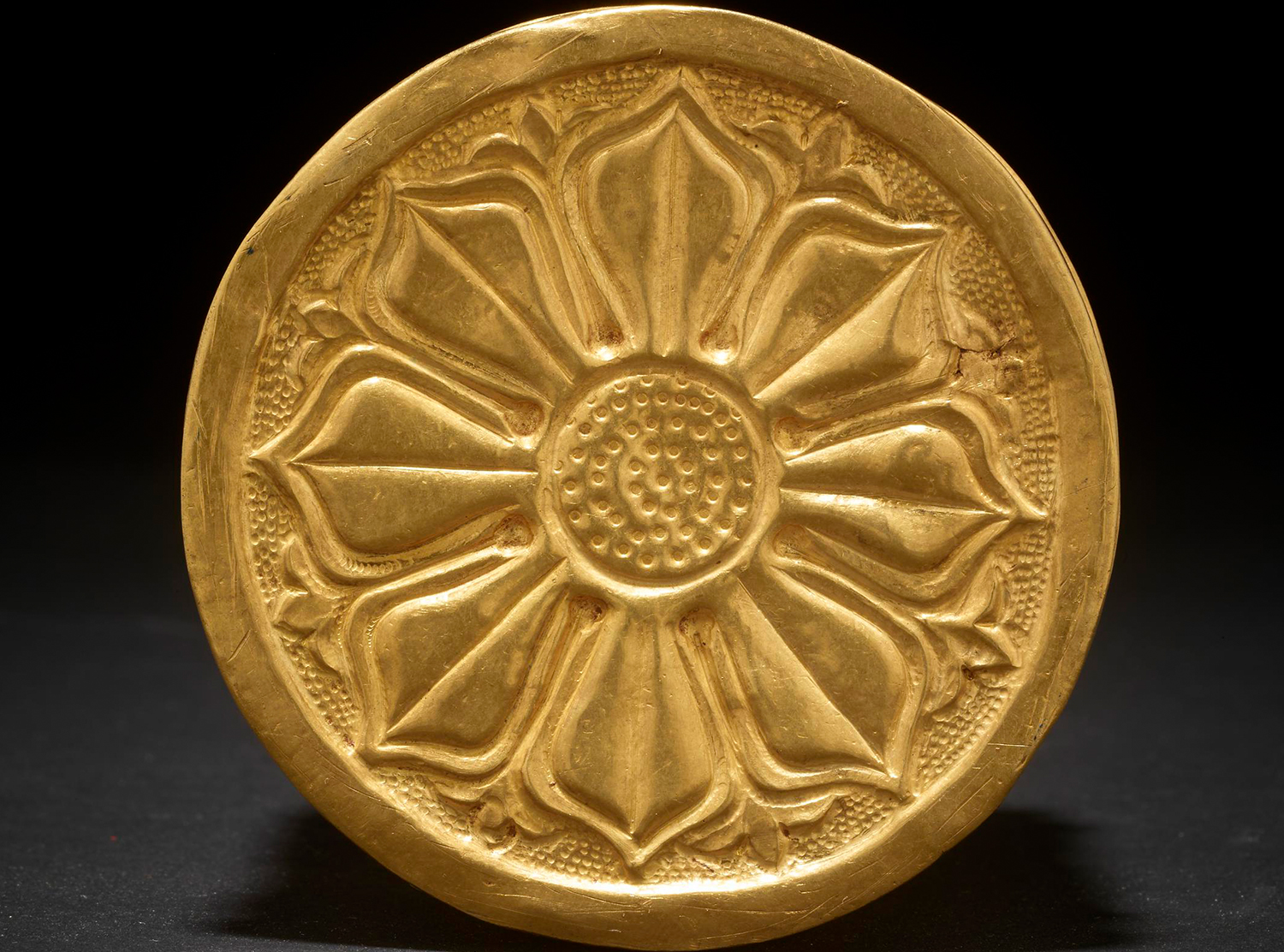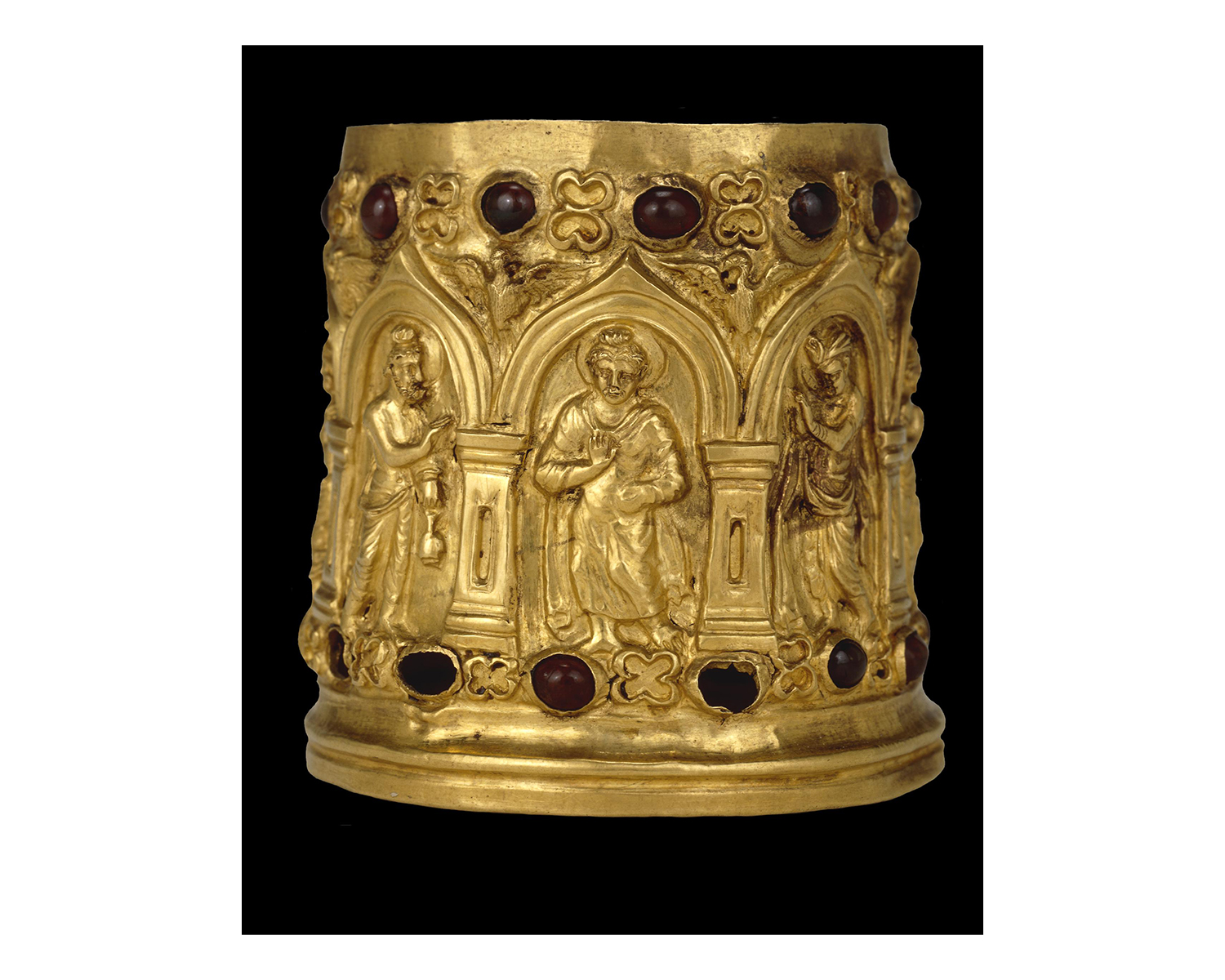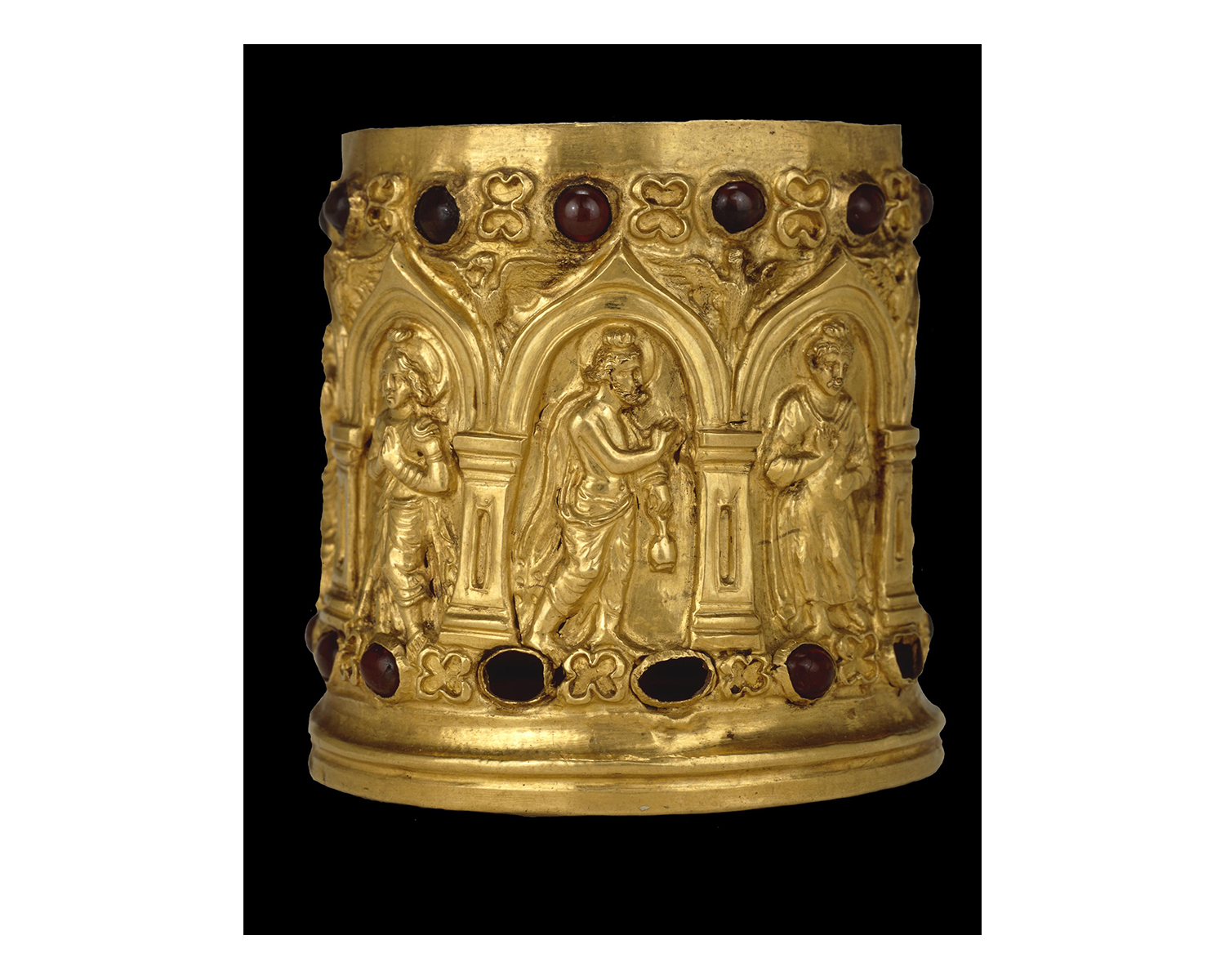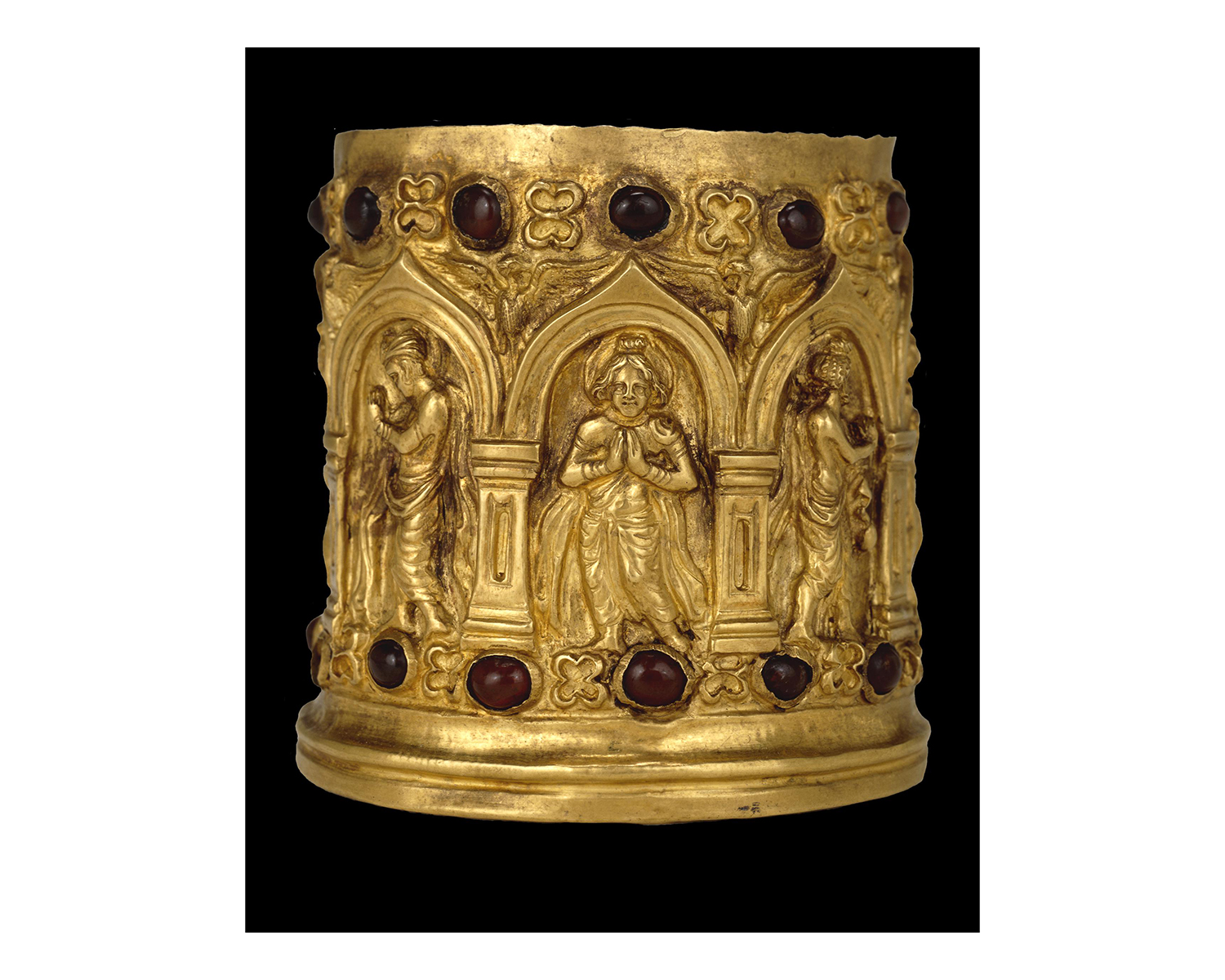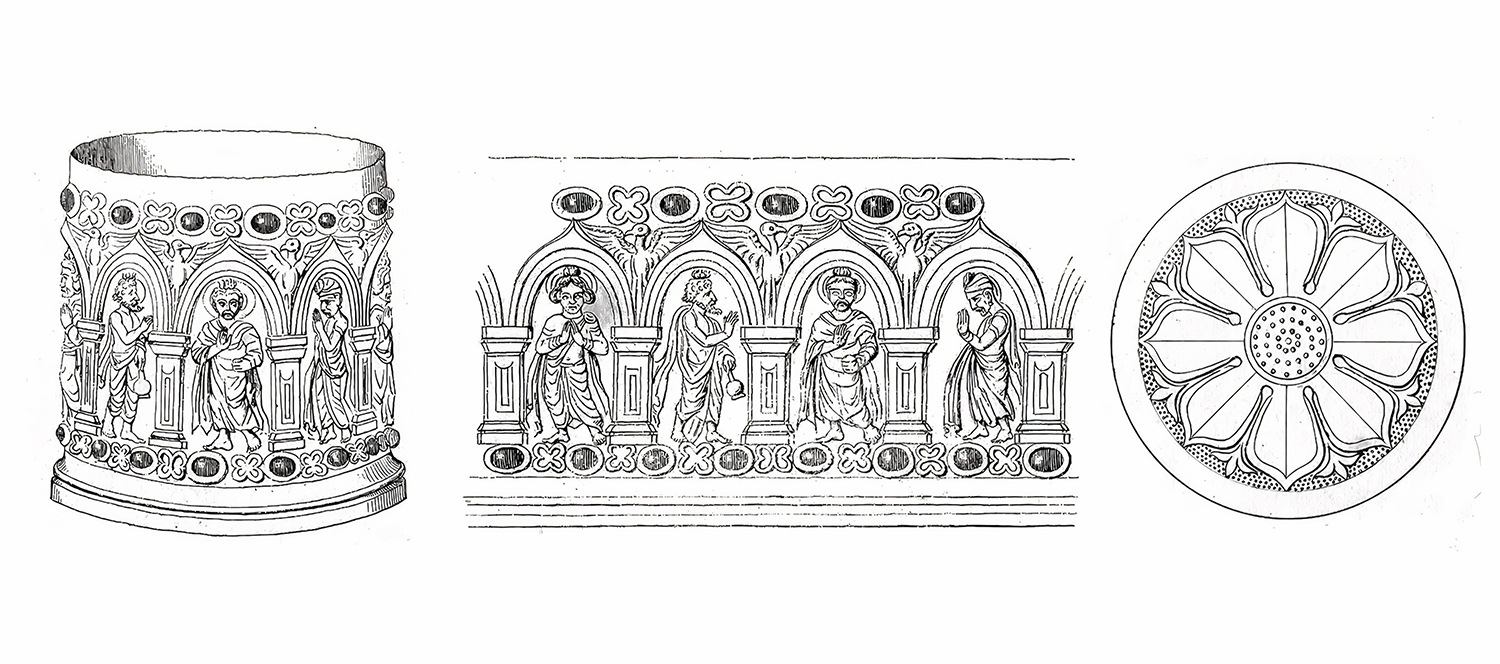ARTICLE
Bimaran Reliquary
Dated roughly to the first century CE, the Bimaran reliquary is a small, intricately worked gold casket that may originally have contained sacred relics, perhaps bone fragments of the Buddha. It was excavated in the 1830s at Bimaran in modern-day Afghanistan, which was part of the ancient province of Gandhara. Thought to have been made in the region, the reliquary is an exceptional specimen of Gandharan art and marks the origin of Greco-Buddhist art in most scholarship today. It is much larger than other Gandharan reliquaries of the period, and, unlike the latter, features elaborate figural decorations. Among these are figures of the Buddha, which are considered the earliest datable images of him in human or anthropomorphic, rather than symbolic or aniconic, form. The reliquary was discovered enclosed within an inscribed stone container and found with precious stones and ornaments as well as coins that have helped scholars to date the reliquary.
Relic worship — sarira puja (‘body worship’) in Pali — has been a key aspect of Buddhist devotional practice since the death and cremation of the Buddha in the fifth century BCE. Stupas have been built all over South Asia to house fragments of his bodily remains or physical objects associated with him, which are deposited there in containers called reliquaries.
The Bimaran reliquary serves as a crucial piece of evidence in art historical research into the origins of the Buddha image that is well-known today. Buddhism was introduced to Gandhara by the Mauryans in the fourth century BCE, and was absorbed into the region’s syncretic culture. The reigns of diverse empires since the sixth century BCE had made ancient Gandhara a vibrant crossroads between the classical cultures of the Mediterranean region and those of South Asia. It now became the birthplace of the Greco-Buddhist school of art, which introduced new visual representations of Buddhist themes including anthropomorphic depictions of the Buddha — a radical departure from the aniconic representations prevalent until the first century CE, in which the Buddha’s presence was depicted through symbols such as as a tree, an empty throne, or his footprints, known as Buddhapada. Most scholars date the emergence of Greco-Buddhist art to the first century CE on the basis of the Bimaran reliquary, despite some uncertainty regarding the casket’s exact date and place of production.
The casket has a diameter of 6.6 centimetres at the base and stands 6.5 centimetres high, tapering slightly towards the top, where it measures 6 centimetres across. It was found without a lid. It is made entirely of hammered, flattened sheets of gold. Its surface is densely ornamented in repoussé, with a frieze showing an arcade of eight pointed arches, each framing a sage-like figure. The figures depicted are the Buddha, Indra, Brahma and a figure that scholars believe to be a bodhisattva, possibly Maitreya — all appearing twice, with only slight variation, each diametrically across from its counterpart. Its underside shows the face of an eight-petalled lotus, decorated with punched dots and smaller floral motifs in the centre and the peripheral negative spaces.
The Buddha is depicted with his hair in a topknot, with a halo behind his head, wearing a light draped robe, and his right hand making the abhaya mudra gesture granting blessings. While his top half is depicted frontally, his right leg is seen sideways and the left is slightly raised with a bend at the knee, as if to suggest walking. On his left, Indra is shown, wearing a turban, a paridhana or draped lower garment, and an uttariya, a flowing shawl. His palms are joined in anjali mudra, a gesture of respect and devotion. On his right, the bearded Brahma appears as an ascetic, haloed, holding a water pot or kamandalu in his left hand, wearing clothing similar to Indra’s, with his right hand raised. Both Indra and Brahma are shown in profile, facing the Buddha in reverent poses. Between the two sets of figures, we see the haloed bodhisattva figure with his long hair partially done in a topknot, wearing armlets and bracelets. His hands are joined in anjali mudra. The classical Greco-Roman artistic influence is seen both in the architectural features — the pilasters and their capitals and base mouldings — and in the style of drapery on these figures.
In each spandrel, or space between two arches, is depicted an eagle with its wings spread, with the plumage detailed with fine grooves and facing the adjacent eagle on one side to form pairs. Above and below the arcade is a row of simple four-petalled repoussé motifs, alternating with oval garnets. The stones are set into sockets created by soldering strips of gold onto the surface of the casket — a technique that was unknown in India at the time but may have been transmitted from Central Asia, where it was common.
The reliquary was discovered by British archaeologist Charles Masson from Stupa no. 2 in Bimaran. It was found in a lidded globular steatite jar — itself originally a reliquary with internal compartments — that features Prakrit inscriptions in Kharosthi, an ancient Indo-Iranian script. These inscriptions identify the jar as a donation of the Buddha’s relics by one Shivarakshita, presumably a local devotee. However, no bone fragments were found in the casket or the stupa at the time of excavation.
In addition to the gold reliquary, the steatite jar contained thirty gold ornaments; burnt pearls and burnt coral beads; turquoise inlays that appear to be made to fit the four-petalled shapes in on the reliquary surface; other gemstones including including amethyst, crystal and agate; and a metallic seal depicting a seated figure. Accompanying the jar were four copper coins; these have been crucial in scholars’ efforts to date the Bimaran reliquary.
The coins found with the reliquary bear the name of the Indo-Scythian king Azes II (c. 35–12 BCE) of Gandhara, and appear to have been deposited immediately after their minting based on their condition. However, features of their design have led some scholars to believe that they were likely minted later to posthumously honour the king, or that they were deposited in the stupa at a different time from the reliquary. While the dating of the coins remains contested among scholars, recent research considers them to have been minted under the reign of a local ruler named Mujatria in the late first century CE.
If assumed to be roughly contemporaneous with the coins, the reliquary offers an unprecedented instance of the anthropomorphic Buddha image. The image became common in Gandhara during the reign of the Kushan ruler Kanishka I (r. 127–150 CE), where it also featured on coins, depicting the Buddha in similar posture and clothing.
In 1900, the Bimaran reliquary was acquired by the British Museum, London, where it is currently on display along with the coins and other objects and the steatite jar in which these were found.
Bibliography
The British Museum. “The Bimaran Reliquary.” Accessed November 20, 2023. https://www.britishmuseum.org/collection/object/A_1900-0209-1.
Cribb, Joe. “Dating the Bimaran Casket: Its Conflicted Role in the Chronology of Gandharan Art.” Gandharan Studies 10, no. 1 (2016): 57–91. https://www.academia.edu/32505266/Dating_the_Bimaran_Casket_its_Conflicted_Role_in_the_Chronology_of_Gandharan_Art.
Huntington, S. L. “Early Buddhist Art and the Theory of Aniconism.” Art Journal 49, no. 4 (Winter 1990): 401–08. http://ccbs.ntu.edu.tw/FULLTEXT/JR-ADM/huntin.htm.
Rienjang, Wannaporn. “The Bimaran Casket: Problems of Production.” Classical Art Research Centre, University of Oxford, November 26, 2017. Accessed November 20, 2023. https://www.carc.ox.ac.uk/XDB/ASP/blog.asp?id=%7B601C569B-000B-4AA3-B9E2-96EAAEA3D445%7D.
Rowland, Benjamin. “Gandhāra and Early Christian Art: The Homme-Arcade and the Date of the Bīmarān Reliquary.” The Art Bulletin 28, no. 1 (1946): 44–47. https://doi.org/10.2307/3047043.
Stargardt, Janice, and Michael Willis, eds. Relics and Relic Worship in Early Buddhism: India, Afghanistan, Sri Lanka and Burma. London: The British Museum, 2018.
University of Washington. “Bimaran Reliquary.” Accessed November 20, 2023. https://depts.washington.edu/silkroad/exhibit/religion/buddhism/i_and_i/ps246910.html.
Werner, Karel. “The Place of Relic Worship in Buddhism: An Unresolved Controversy?” Buddhist Studies Review 30, no. 1 (2013): 71–87. https://doi.org/10.1558/bsrv.v30i1.71.




